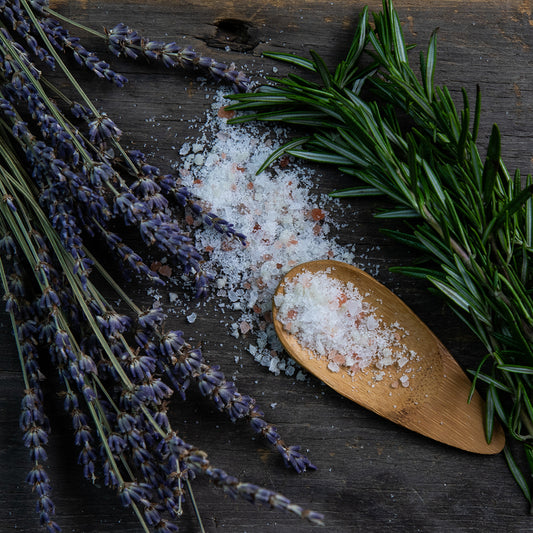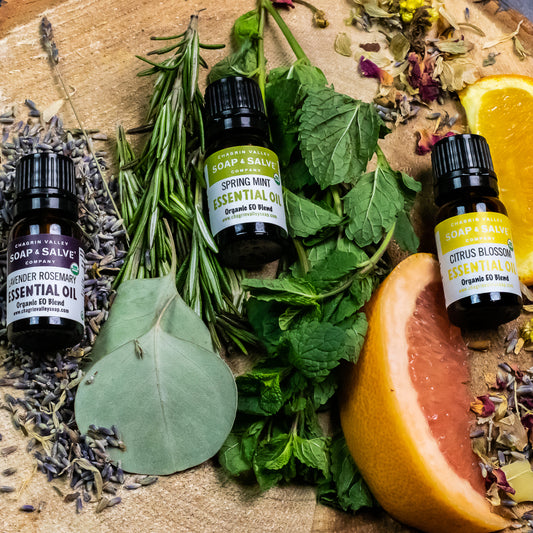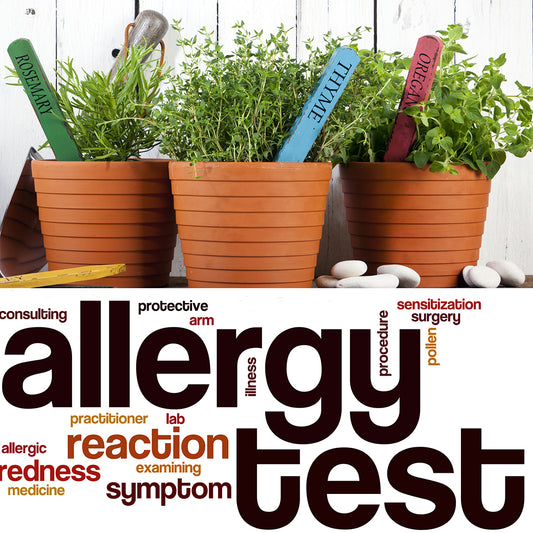Photosensitivity and Citrus Essential Oils
 The scents from citrus essential oils like grapefruit, orange, lemon, and lime are magnificent when you need to boost your mood or brighten your day.
The scents from citrus essential oils like grapefruit, orange, lemon, and lime are magnificent when you need to boost your mood or brighten your day.
These oils are often called “happiness in a bottle” because their aroma inspires happy feelings!
You may have heard the terms “phototoxicity,” “photosensitivity,” or photoirritation when reading about citrus essential oils which may scare you away from using these wonderfully uplifting oils.
Since many people are misinformed about photosensitive skin reactions and citrus oils, let’s explore some information.
What is Phototoxicity?
For the purpose of this blog, we will define phototoxicity, also known as photosensitivity, as a condition in which the skin becomes extremely sensitive when exposed to sunlight (or any UV radiation) due to the topical application of certain substances – in this case, citrus essential oils.
The skin condition is called phytophotodermatitis (phyto=plant; photo=light; derma=skin; itis=inflammation)
An essential oil is said to be “phototoxic” when it increases the likelihood of a photosensitive reaction.
What Makes an Essential Oil Photosensitive?
All essential oils are a collection of natural chemical compounds, but some essential oils contain particular chemical compounds called furanocoumarins (FCs).
Furocoumarins are a class of naturally occurring organic compounds that include substances like psoralen, methoxsalen, bergapten, and oxypeucedanin. Many furanocoumarins are phototoxic and can cause phytophotodermatitis upon exposure to UV light.
They are common in the Rutaceae plant family which includes citrus fruits and the Umbelliferae family which includes fennel, dill, parsley, celery, wild carrot, and giant hogweed. They are produced by plants as a defense mechanism to protect themselves from small animals, insects, fungus, and even some bacteria.
 While furocoumarins are found in many citrus fruits, not all citrus fruits contain furanocoumarin.
While furocoumarins are found in many citrus fruits, not all citrus fruits contain furanocoumarin.
For example, as you will see later in this blog, the essential oils from lemon and lime peel can be highly phototoxic while orange and tangerine are not. Also, oils extracted from the leaves and flowers of citrus plants usually contain much lower (if any) levels of furocoumarins.
So, essential oils like neroli extracted from the flowers of the orange tree and petitgrain from the leaves and twigs are not phototoxic.
The furocoumarin is absorbed into the cells of the epidermis, the top layer of the skin, and when activated by UVA rays it triggers an inflammatory response that results in skin irritation.
Phototoxic reactions only occur when these oils are applied topically at dilutions that are greater than those recommended and the skin is exposed to UV light.
Signs of a Phototoxic Reaction
A phototoxic skin reaction, also called phototoxic dermatitis, occurs when a phototoxic chemical exaggerates the skin’s reaction to UV light, causing a type of super sunburn. Some examples of the irritation you can experience are:
- Inflammation
- Redness
- Itching
- Burning
- Blisters
- Skin discoloration
Similar to receiving a sunburn, there is usually no pain, inflammation, or symptoms initially. In other words you do not feel anything while is is happening.
The burns usually develop hours later, and may continue to worsen for 1-3 days.
 These phototoxic “burns” typically start as a rash that forms from 1-24 hours after sun or UV exposure, including tanning beds. The rash can grow into a cluster of painful burn blisters.
These phototoxic “burns” typically start as a rash that forms from 1-24 hours after sun or UV exposure, including tanning beds. The rash can grow into a cluster of painful burn blisters.
The blisters usually turn into dark patches or streaks that can last for weeks or months. Just like a sunburn, the reaction is usually more severe in people with fair skin.
This photosensitivity reaction is sometimes called “margarita dermatitis,” since skin contact with lime juice, from cutting fresh limes for margaritas during sunny summer days, is a common cause of this condition.
What Factors Determine if a Phototoxic Reaction Will Occur?
In order for phytophotodermatitis to occur, the essential oil product must be left on the skin and be exposed to the sun or UV rays.
The degree of the photosensitivity reaction (if any) depends on the type of oil, the amount (how much product is on your skin), exposure time, and the dilution.
Type of Oil: As you read more below you will see that the type of essential oil(s) as well as how it is extracted is critically important.
Amount: How much oil or skincare product is used as well as how often it is applied can affect the severity of a photosensitivity reaction.
Exposure Time: The length of time that the application area has been exposed to the sun is extremely important. Are you taking a short walk from your car to the store? Then there is probably not enough sun exposure to cause a reaction. However, if you are working in the garden on a sunny day or spending the day at the beach that would be enough exposure to cause a photosensitivity reaction.
Safe Dilution: The total percent of phototoxic essential oil in the skin application is important. Whether using a single essential oil, an essential oil blend, or a product containing essential oils, it is the total percentage of furanocoumarins in the final product that determines the risk of a reaction.
Remember that photosensitivity reactions only occur when oils are applied topically at dilutions that are greater than those recommended.
In the book Essential Oil Safety, Robert Tisserand and Rodney Young offer some good information regarding the use of photosensitive oils:
“There is generally no phototoxic risk if the oils are used in a product that is either not applied to the body or is washed off the skin, such as shampoo, bath preparation, or soap. However, essential oils can adhere to the skin if used in a sauna or steam inhalation. There is no risk if the skin to which the oils are applied is covered in such a way as to prevent UV rays from reaching them."
Furthermore, Tisserand recommends that if you are using phototoxic oils on exposed skin at levels higher than the maximum use levels recommended, you should not be exposed to UV light for 12-18 hours after application.
Please note that phototoxic oils can cause sensitivity reactions and will NOT help you tan faster or better!
Which Citrus Oils ARE Phototoxic and Which Are NOT?
Although most of the essential oils that cause this photosensitive reaction are citrus oils, not all citrus essential oils are phototoxic.
 Also, the method of extracting the essential oil is important in determining phototoxicity. For example, you will notice in the lists below that distilled lime essential oil is not phototoxic, and yet cold-pressed lime is.
Also, the method of extracting the essential oil is important in determining phototoxicity. For example, you will notice in the lists below that distilled lime essential oil is not phototoxic, and yet cold-pressed lime is.
Why? Furocoumarins are heavy molecules that are less volatile than many of the other components in essential oils.
Although the chemical component that can cause phototoxicity is in the plant itself, when lime oil is extracted using steam distillation it contains very little furocoumarin compared to that extracted using the cold-pressed/expressed method.
Thus knowing how your essential oil was extracted from the plant is critical in determining the photosensitivity of some essential oils.
The Lime Essential Oil we use at Chagrin Valley is STEAM DISTILLED meaning it is extracted via a distillation process and not cold-pressed. This means that it is not phototoxic.
Here’s a quick guide to phototoxicity in citrus essential oils according to the research reported in the book Essential Oil Safety by Robert Tisserand and Rodney Young and the International Fragrance Association (IFRA).
Some citrus essential oils that are NOT phototoxic:
- Bergamot FCF or BF (Citrus bergamia) essential oil (furocoumarin and bergaptene free)
- Bergamot (Citrus bergamia) essential oil, steam distilled
- Lemon (Citrus limon) essential oil, steam distilled
- Lime (Citrus aurantifolia) essential oil, steam distilled
- Mandarin (Citrus reticulata) essential oil, cold-pressed or steam distilled
- Neroli (orange blossom) (Citrus x aurantium) essential oil
- Sweet orange (Citrus sinensis), cold-pressed or steam distilled
- Petitgrain (orange leaf) (Citrus aurantium) essential oil
- Tangerine (Citrus reticulata) essential oil, cold-pressed or steam distilled
- Yuzu Oil (Citrus junos) essential oil, cold-pressed or steam distilled
Essential oils like May Chang (Litsea cubeba), Lemon Myrtle (Backhousia citriodora), and Lemongrass (Cymbopogon flexuosus) may have a citrusy aroma but they are not citrus oils and are not phototoxic.
Some of the citrus essential oils that ARE phototoxic:
- Bergamot (Citrus bergamia) essential oil, cold-pressed
- Bitter orange (Citrus x aurantium) essential oil, cold-pressed
- Grapefruit (Citrus paradisi) essential oil, cold-pressed*
- Lemon (Citrus limon) essential oil, cold-pressed
- Lime (Citrus aurantifolia) essential oil, cold-pressed
*There is some controversy as to whether grapefruit essential oil should be included on the phototoxic list. Some professionals in the field of essential oil research believe that an analysis of the chemical breakdown of grapefruit oil and the existing literature do not show concerns of phototoxicity for grapefruit essential oil.
Distilled vs Cold Pressed Essential Oils
I know this was mentioned above, but I want to stress that the method used to extract the oil from the plant can determine its potential phototoxicity. (Read: How Are Essential Oils Extracted?)
For example, while cold-pressed lemon essential oil can cause a photosensitive reaction, lemon oil that is extracted using steam distillation does not.
Why? Since the photosensitizing furanocoumarins are larger and heavier than other essential oil components, they are not as volatile (do not easily evaporate). As a result they are left behind when the plant is steam distilled.
So even though a plant, like lemon or lime, naturally contains phototoxic components, they will not appear in the distilled essential oil.
Not All Citrus Oils are Equally Phototoxic
It is important to note that the citrus essential oils listed above are not all equally phototoxic. The simple presence of a furocoumarin in an essential oil does not determine the risk of phototoxicity. It is the amount present in the oil that is important. For example, the safe dilution in a carrier oil for grapefruit essential oil is 4% whereas the safe dilution for bergamot oil is only 0.4%.
Therefore, each oil has a different maximum percentage that can be used in skincare products before you are risking sensitization and skin irritation.
 Below are the maximum percentages of certain phototoxic oils that can be used on the skin, and roughly how many drops would be used per ounce (30 ml) of carrier oil.
Below are the maximum percentages of certain phototoxic oils that can be used on the skin, and roughly how many drops would be used per ounce (30 ml) of carrier oil.
This information comes from the Essential Oil Safety book by Tisserand and Young and the numbers are rounded to full drops.
Bergamot, cold-pressed – 0.4% or about 2 drops per ounce of carrier
Lime, cold-pressed – 0.7% or about 4 drops per ounce of carrier
Lemon, cold-pressed – 2% or about 12 drops per ounce of carrier
Grapefruit, cold-pressed – 4% or about 24 drops per ounce of carrier
Although cold-pressed bergamot essential oil contains furanocoumarins like bergapten, steam-distilled bergamot essential oil is bergapten free.
Since Bergamot essential oil is considered to be phototoxic even at a low dilution level, at Chagrin Valley we use steam distilled or bergapten-free bergamot oil in our topical skincare products that remain on the skin.
You may see the letters “FCF” which means “furocoumarin free” or “BF” which means “bergapten free.”
We also only use distilled lemon and lime essential oils on topical products.
If you are making your own essential oil blends it is important to note that the risk of phototoxicity increases if you are combining several oils in a blend, even those with minor photosensitizing properties. As a safe general rule of thumb, Tisserand and Young recommend using no more than four (4) drops total of any citrus fruit essential oil combination per 30 ml (1 ounce) of carrier oil.
In addition, some non-citrus essential oils as well as other plants are phototoxic such as tagetes, cumin, and angelica root essential oils, celery, figs, fennel, and a number of other essential oils and plants.
Can you still use photosensitive citrus oils if your skin will be exposed to the sun?
For products we sell at Chagrin Valley Soap & Salve, we will always tell you on the label and the website if the product can possibly cause photosensitivity. By carefully calculating the amount of photosensitive oil(s) in the blend, we can safely determine whether a blend is safe to use in the sun.
Here are some suggestions for safe ways to use phototoxic essential oils.
-
Patch Test! Even if an essential oil blend or product is not listed as phototoxic, always use care and perform a patch test before use especially if you have fair or sensitive skin.
- Be sure that the pure essential oil or essential oil blend is used at the recommended safe dilution in a carrier oil so they can be safely used on exposed skin in the sun.
- If you are not sure that an essential oil product is at a safe dilution level assume that it is not and stay out of the sun (and the tanning bed) for 12 – 18 hours after you apply the oil to exposed skin. You can also wear sun-protective clothing over the exposed area but it is important to note that summer clothes tend to be lightweight and light in color, meaning that UV rays can often penetrate them. And NO, slathering sunscreen on exposed areas where you have used phototoxic essential oils is not a good idea!
- Apply the oils to an area that will not be exposed to the sun.
- You can always use these vibrant, zesty uplifting scents in some type of diffuser instead of applying them topically. Although some recommend that it is safe to use these photosensitive oils with aromatic jewelry diffusers, I would recommend some caution here, especially when the jewelry is in constant contact with skin that is exposed to UV rays.
- Remember it is safe to use a phototoxic essential oil in products that will be washed off such as soap, shampoo, or sugar scrubs. So you can wash your face with a bergamot scrub and go out for a sunny day in the garden with no ill effects.
It is important to note that essential oils and plants are not the only things that can cause a photosensitivity reaction. Some medications, medical conditions, and common skincare ingredients such as retinol, glycolic acid, or benzoyl peroxide often increase your chances of damage from UV exposure.
Conclusion
Photosensitive essential oils may seem a bit intimidating at first, but do not be afraid to use these bright, happy, uplifting oils.
Just remember a few key facts:
- Not all citrus oils cause photosensitivity reactions
- Not all citrus oils are equally phototoxic and each oil has a different maximum percentage that can be used in skincare products before you risk sensitization and skin irritation
- The type of oil, how it is extracted, the amount used, exposure time, and dilution all affect the severity of a reaction
- The phototoxic reaction only occurs if the blend is applied topically at dilutions that are greater than those recommended for sun-exposed skin
We love essential oils and hope the information in this blog helps increase your understanding of proper essential oil use. If you do your research and use them properly, you can reap the benefits of these refreshing oils while keeping your skin safe.
REFERENCES
Tisserand, R. and Young, R. (2014). Essential Oil Safety. (2nd ed.). London: Churchill Livingstone Elsevier
IFRA Standards Library. Guidance For The Use Of IFRA Standards. May 4, 2020. pg 17.

Why We Use Only Real Plant Essential Oils?
Essential Oil Basics: A Guide To Dilution Rates
How to Diffuse Essential Oils for Personal Use
Why Are Synthetic Fragrance Oils So Popular?
Natural Fragrance Oil? . . . Really?
How To Do A Simple Allergy Patch Test
The information above pertains to healthy adults. We do not provide information on the safety of essential oils during pregnancy or for use in Children because the available information is often contradictory. If you are interested in using essential oils during pregnancy or with young children please do your own research and be sure to consult your doctor, midwife, or health care professional before use.
The statements regarding health-related benefits of essential oils have not been evaluated by the Food and Drug Administration and are in no way intended and should not be construed as medical advice to diagnose, treat, cure, or prevent any disease or health condition.


